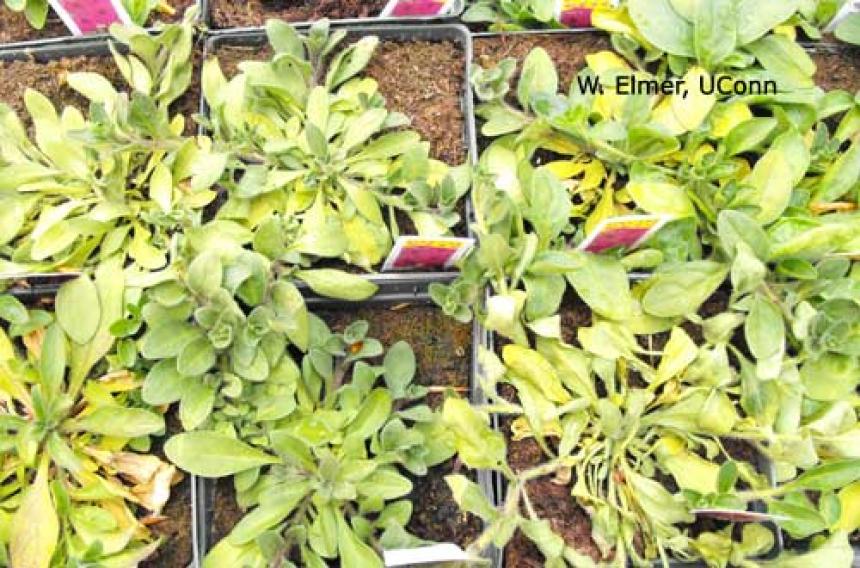Black root rot caused by Thielaviopsis basicola has been observed on Wave petunias and snapdragons. Plants appeared stunted and yellow and occasionally wilted. Growers suspecting Black root rot should get their plants diagnosed before applying fungicides.
Thielviopsis root and stem rot, often called Black rot, is caused by Thielaviopsis basicola. Practice good sanitation, starting with clean growing media, pots, flats, and plant material. Avoid overwatering and overfertilizing. Thielaviopsis is favored by alkaline pH and can be managed by keeping the pH of the media at 5.5. Fungicide applications will not cure affected plants, but will prevent infection of healthy plants. Discard infected plants and remove plant debris and infested soil. Drench the soil with Cleary's 3336,Fungo Flo, Contrast, Medallion, or Terraguard. When stem rot is present, fungicide must contact the stems for effective control. Cleary's 3336 and Fungo Flo consist of the same active ingredient, thiophanate methyl, and should be rotated with Contrast, Medallion, or Terraguard to prevent resistance development.
Links to fact sheets:
